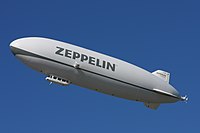
Photo from wikipedia
The role of intra-abdominal pressure (IAP) in spinal load reduction has remained controversial, partly because previous musculoskeletal models did not introduce the pressure generating mechanism. In this study, an integrated… Click to show full abstract
The role of intra-abdominal pressure (IAP) in spinal load reduction has remained controversial, partly because previous musculoskeletal models did not introduce the pressure generating mechanism. In this study, an integrated computational methodology is proposed to combine the IAP change with core muscle activations. An ideal gas relationship was introduced to calculate pressure distribution within the abdominal cavity. Additionally, based on flexible multibody dynamics, a muscle membrane element was developed by incorporating the muscular fiber deformation, inter-fiber stiffness, and volume constancy. This element was then utilized in discretizing the diaphragm and transversus abdominis, forming an IAP-muscle coupling system of the abdominal cavity. Based on this methodology, a forward dynamic simulation of spinal flexion was presented to examine the unloading effect of abdominal breathing. The results confirm that core muscle contraction during the abdominal breathing cycle can substantially reduce the forces of spinal compression together with trunk extensor muscles, and this effect is more pronounced when the IAP increase is produced by contraction of the transversus abdominis. This unloading effect still holds even with the co-activation of other abdominal muscles, providing a potential choice when designing trunk movements during weight-lifting tasks.
Journal Title: Biomechanics and modeling in mechanobiology
Year Published: 2021
Link to full text (if available)
Share on Social Media: Sign Up to like & get
recommendations!